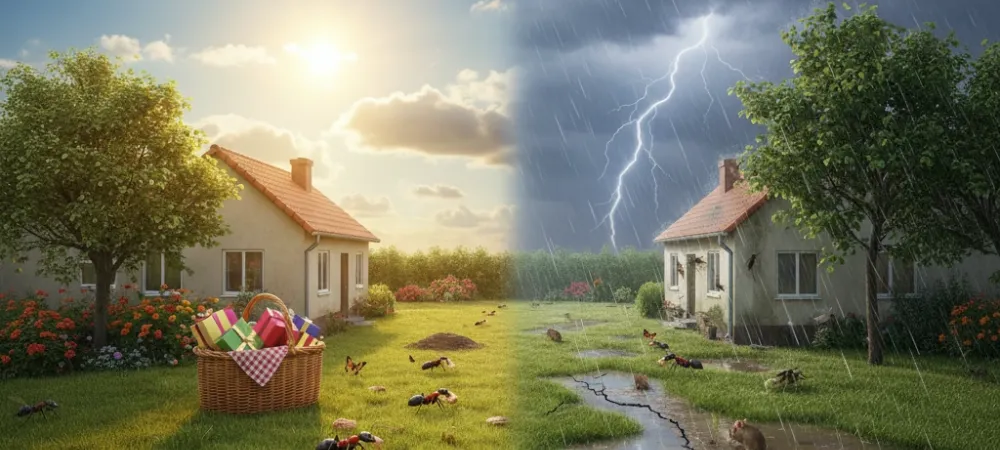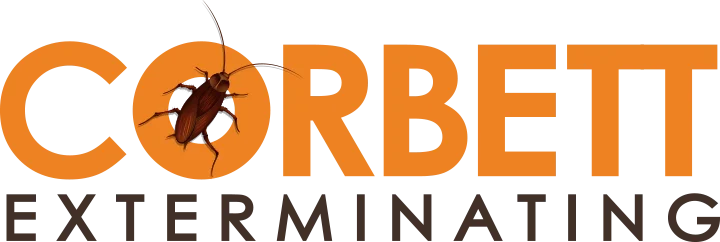How Weather Patterns Impact Common Household Pests

Weather influences much more than the daily forecast; it plays a critical role in shaping the behavior and invasiveness of common household pests. For homeowners in New Jersey, Mississippi, New York, and Pennsylvania, understanding how droughts, heavy rainfall, and cold weather affect pest activity can help protect homes, safeguard health, and reduce costly infestations year-round. This guide outlines key weather-driven pest patterns relevant to Corbett Exterminating’s service areas and explains why professional pest control is essential to adapt to these seasonal challenges.
How Drought Conditions Alter Pest Behavior
Extended dry periods, or droughts, reduce outdoor water sources, changing the living conditions for many pests and driving them indoors in search of sustenance and shelter. The U.S. Department of Agriculture’s Forest Service explains how drought stress can increase pest infestations as insects and rodents seek suitable habitats and food supplies in residential areas (U.S. Forest Service Major Forest Insect and Disease Conditions 2023).
- In regions like Mississippi and New Jersey, drought can cause ants and spiders, typically residing outdoors, to infiltrate homes where moisture accumulates in basements, bathrooms, and kitchens.
- Rodents such as mice and rats become more aggressive during dry spells as garden water shrinks and they look for reliable water sources indoors.
- Termite activity may initially decrease during droughts due to soil dryness, but prolonged dryness weakens trees and vegetation, creating ideal conditions for drywood termites that invade wooden structures.
Localized drought studies in New York and Pennsylvania affirm that “homes near drought-stressed vegetation experience higher infestations of certain pests,” underscoring the ripple effect from outdoor landscapes into the home environment (New York State Integrated Pest Management Program).
Rainfall and Moisture: Triggers for Termite Swarms and Other Insects
Moisture from heavy rain and humidity creates ideal breeding environments for moisture-loving pests, particularly termites, ants, cockroaches, mosquitoes, and flies.
- The National Pest Management Association reports, “Following heavy rains, termite swarmers emerge en masse to establish new colonies, often entering homes unnoticed during windows or cracks in foundations” (NPMA: The Perfect Storm for Public Health Pests).
- In Pennsylvania and New York, wet springs and falls lead to spikes in termite-related damage calls, as well as infestations of moisture-loving silverfish and carpenter ants.
- Cockroaches, which thrive in damp environments, peak in population after extended wet periods, often invading basements, kitchens, and crawl spaces where water leaks or condensation accumulates.
- Mosquito populations increase with standing water after storms or rainfall, raising concerns in New Jersey and Mississippi for mosquito-borne illnesses during warm months (CDC Mosquito-Borne Diseases).
For homeowners, these trends mean vigilance is essential after rainy periods, with seasonal inspections and moisture control serving as critical preventive strategies.
Cold Weather and Its Effects on Rodents and Other Pests
Cold temperatures trigger behavioral shifts in pests, increasing their likelihood of invading homes and commercial buildings. For homeowners in New Jersey, New York, and Pennsylvania, winter brings a sharp rise in rodent activity.
- The Pennsylvania Department of Environmental Protection notes, “As outdoor temperatures drop below freezing, rodents seek warm shelter, food, and nesting sites indoors, resulting in higher infestation rates between November and March” (PA DEP Rodents in Winter).
- The New Jersey Department of Health emphasizes that rodents carry various diseases and cause significant structural damage through gnawing, making infestations during winter particularly concerning. Proper sanitation, exclusion, and trapping are critical components of effective rodent management to reduce these risks
- In Mississippi, where winters are milder but marked with cold snaps, homeowners often witness rodent invasions following abrupt temperature drops.
- Rodents hide in attics, wall voids, or basements, contaminating food and property while multiplying rapidly unless controlled professionally.
Cold weather also triggers pests such as cluster flies and boxelder bugs to seek warmth indoors, irritating residents and complicating pest management during colder months.
Regional Weather Patterns and Their Unique Pest Implications
Each state in Corbett Exterminating’s service area faces distinct weather patterns affecting pest pressures differently:
- New Jersey experiences humid summers and snowy winters, leading to extended mosquito seasons and heightened winter rodent activity.
- Mississippi’s subtropical climate results in long mosquito activity periods and consistent termite threats due to year-round soil moisture.
- New York combines cold winters with wet springs, causing pronounced seasonal spikes in rodent invasions and termite swarm activity.
- Pennsylvania fluctuates with high precipitation and temperature changes that encourage year-round pest diversity, including moisture-loving insects and overwintering rodents.
Recognizing these regional trends helps homeowners anticipate pest risks and implement proactive protective measures.
Why Professional Pest Control Is Key During Weather-Driven Pest Seasons
Weather-driven pest pressures require a responsive, expert approach balancing inspection, prevention, and targeted treatments.
- Professionals stay ahead of pest activity by monitoring local weather trends and pest behavior changes.
- Inspections during seasonal transitions identify entry points and breeding grounds before infestations develop.
- Integrated pest management—including exclusion, habitat modification, and safe chemical use—minimizes pest presence while protecting health and property.
- Routine pest control ensures swift responses to weather-triggered surges, saving homeowners time, money, and hassle.
At Corbett Exterminating, we combine science-backed strategies and local knowledge across NJ, MS, NY, and PA to safeguard homes from complex, weather-driven pest challenges.
Take Action Today to Protect Your Home
Don’t let weather shifts make your home a pest haven. Contact Corbett Exterminating for comprehensive inspection and customized pest control services tailored to your region’s unique challenges.
Enjoy peace of mind knowing your home is protected year-round—rain or shine, drought or cold—because expert pest control never waits for the weather.
Sources:
- USDA Forest Service. “Major Forest Insect and Disease Conditions in the United States: 2023.” USDA FS, 2023.
https://www.fs.usda.gov/sites/default/files/fs_media/fs_document/major-forest-conditions-2023.pdf - New York State Integrated Pest Management Program. 2023-2024 NYSIPM Annual Report. College of Agriculture and Life Sciences, Cornell University, 2023-2024, https://cals.cornell.edu/integrated-pest-management/research-initiatives/publications/2023-2024-nysipm-annual-report.
- National Pest Management Association. “The Perfect Storm for Public Health Pests.” NPMA, 2025. https://www.pestworld.org/multimedia-center/press-releases/the-perfect-storm-for-public-health-pests-npma-highlights-incoming-threats/
- Centers for Disease Control and Prevention. “About Mosquitoes.” CDC, 2024.
https://www.cdc.gov/mosquitoes/about/index.html - Pennsylvania Department of Environmental Protection. “Rodent Control.” PA DEP, 2024.
https://www.dep.pa.gov/Business/EnvironmentalResources/Waste/Pages/Rodent-Control.aspx - New Jersey Department of Health. Integrated Pest Management Manual for Homes. New Jersey Department of Health, 2024, https://www.nj.gov/health/ceohs/documents/ceohs%20content/NJDOH%20IPM%20Manual%20for%20Homes.pdf.
